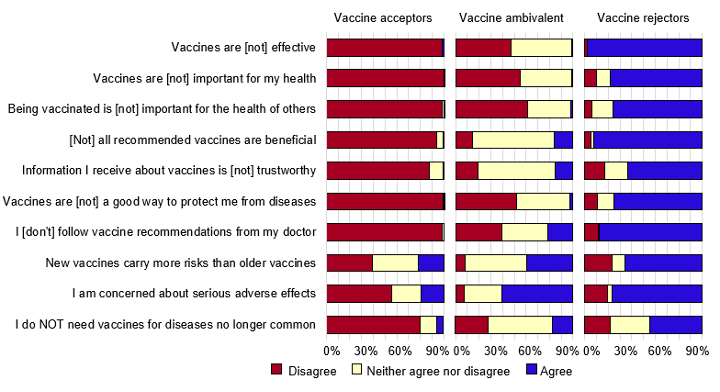ABSTRACT
Background: It is important to distinguish between apprehensions that lead to vaccine rejection and those that do not. In this study, we 1) identifed latent classes of individuals by vaccination attitudes, and 2) compared classes of individuals by sociodemographic characteristics COVID-19 vaccination, and risk reduction behaviors.
Methods: The COVID-19 Coping Study is a longitudinal cohort of US adults aged ≥55 years (n=2,358). We categorized individuals into three classes based on the adult Vaccine Hesitancy Scale using latent class analysis (LCA). The associations between class membership and sociodemographic characteristics, COVID-19 vaccination, and other behaviors were assessed using chi-square tests.
Results: In total, 88.9% were Vaccine Acceptors, 8.6% were Vaccine Ambivalent, and 2.5% Vaccine Rejectors. At the end, 90.7% of Acceptors, 62.4% of the Ambivalent, and 30.7% of the Rejectors had been vaccinated. The Ambivalent were more likely to be Black or Hispanic, and adopted social distancing and mask wearing behaviors intermediate to that of the Acceptors and Rejectors.
Discussion: Targeting the Vaccine Ambivalent may be an efficient way of increasing vaccination coverage. Controlling the spread of disease during a pandemic requires tailoring vaccine messaging to their concerns, e.g., through working with trusted community leaders, while promoting other risk reduction behaviors.
Keywords:
COVID-19, vaccination, vaccine hesitancy, older adults
